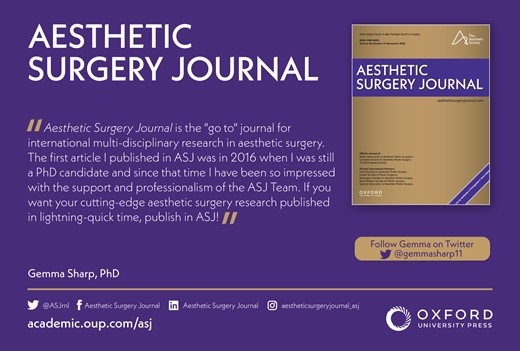-
PDF
- Split View
-
Views
-
Cite
Cite
Rishub K Das, Alan T Makhoul, Kianna Jackson, Galen Perdikis, Brian C Drolet, Plastic Surgery Referrals and Practice Patterns in a Student-Run Free Clinic Serving Individuals Without Health Insurance, Aesthetic Surgery Journal, Volume 43, Issue 6, June 2023, Pages NP476–NP477, https://doi.org/10.1093/asj/sjad045
Close - Share Icon Share
Academic medical centers and affiliated professional schools across the country have established student-run free clinics (SRFCs) to provide care for underserved populations. These SRFCs also offer health professional students a unique opportunity to engage with patients under the direct supervision of attending physicians.1 This environment has been proven to enhance learning and empower students while addressing unmet social and health-care needs in the community.2 Some of these clinics have expanded the services offered to patients by hosting specialty clinics including psychiatry, dermatology, and obstetrics.3 However, there is a paucity of information about plastic surgery and procedural services in SRFCs.
In October 2020, the Shade Tree Clinic, operated by medical students at Vanderbilt University (Nashville, TN, USA), established a plastic surgery specialty clinic for its panel of approximately 300 uninsured patients.4 At each visit, a preclinical student gathers vital signs and a focused history and physical examination under the supervision of a senior clinical student. The pertinent findings and treatment plan are presented to an attending plastic surgeon, and the plan is carried out by the team. Consent is routinely obtained for procedures by students while under direct supervision by plastic surgeons. Biopsies and specimens are evaluated pro bono by a pathologist at the affiliated medical center. Appointments are scheduled in the evening during the week or on the weekend to accommodate patients who work during the day. We conducted a retrospective analysis of patient encounters for plastic surgery at our SRFC. The study was deemed exempt from review by the Vanderbilt University Institutional Review Board.
Over the past 2 years, we received 28 new patient referrals to our service. The mean age for patients referred to the plastic surgery clinic was 52 years (standard deviation, 12.9) and 13 (46.3%) were female. Among the 28 patients, 12 (42.9%) were White/Caucasian, 10 (35.7%) were Hispanic, 5 (17.9%) were Black, and 1 (3.6%) was Egyptian. Translation services were utilized for patients who spoke primarily Spanish (9; 32.1%) and Arabic (1; 3.6%). Indications for referral to the plastic surgery service included 9 (32.1%) patients for hand pathology (eg, contractures, carpal tunnel syndrome), 8 (28.6%) patients for chronic wounds (eg, diabetic foot ulcers), 7 (25.0%) patients for benign soft tissue masses or skin lesions (eg, lipoma, keloid), 3 (10.7%) patients for skin cancer, and 1 (3.6%) patient for skin redundancy following massive weight loss. Excisions were performed for 11 (39.2%) patients in clinic. Carpal tunnel or contracture release was performed for 7 (25.0%) patients, and 2 (7.1%) patients received steroid injections. Wound care instructions and dressings were provided to 8 (28.6%) patients. One patient with a history of massive weight loss is scheduled for a pro bono panniculectomy this year to address an abdominal pannus complicated by infections of the skin fold and limited activities of daily living. There were no complications from any of these encounters or clinic procedures, and all excisions had clear margins with no indication for re-excision. Patients were scheduled for close follow-up with either the plastic surgery service or their primary care team at the clinic.
Our experience suggests that SRFCs can safely provide underserved populations with access to wound care, procedures, and other plastic surgery services for conditions ranging from carpal tunnel syndrome to skin cancer. Before the establishment of the plastic surgery service, patients at our SRFC were referred to surgeons at our medical center, but the process was inefficient and difficult to navigate, especially for patients with social needs and fewer resources. Students volunteering in the clinic gained exposure to the role plastic surgeons can play in low resource settings and learned about indications for operative intervention while developing technical skills by assisting with procedures. Future directions for the clinic include increasing referrals by educating primary care teams about the scope of plastic surgery and advocating for additional resources to support pro bono surgery at the medical center for patients who require general anesthesia.
Disclosures
The authors declared no potential conflicts of interest with respect to the research, authorship, and publication of this article.
Funding
The authors received no financial support for the research, authorship, and publication of this article.
References




